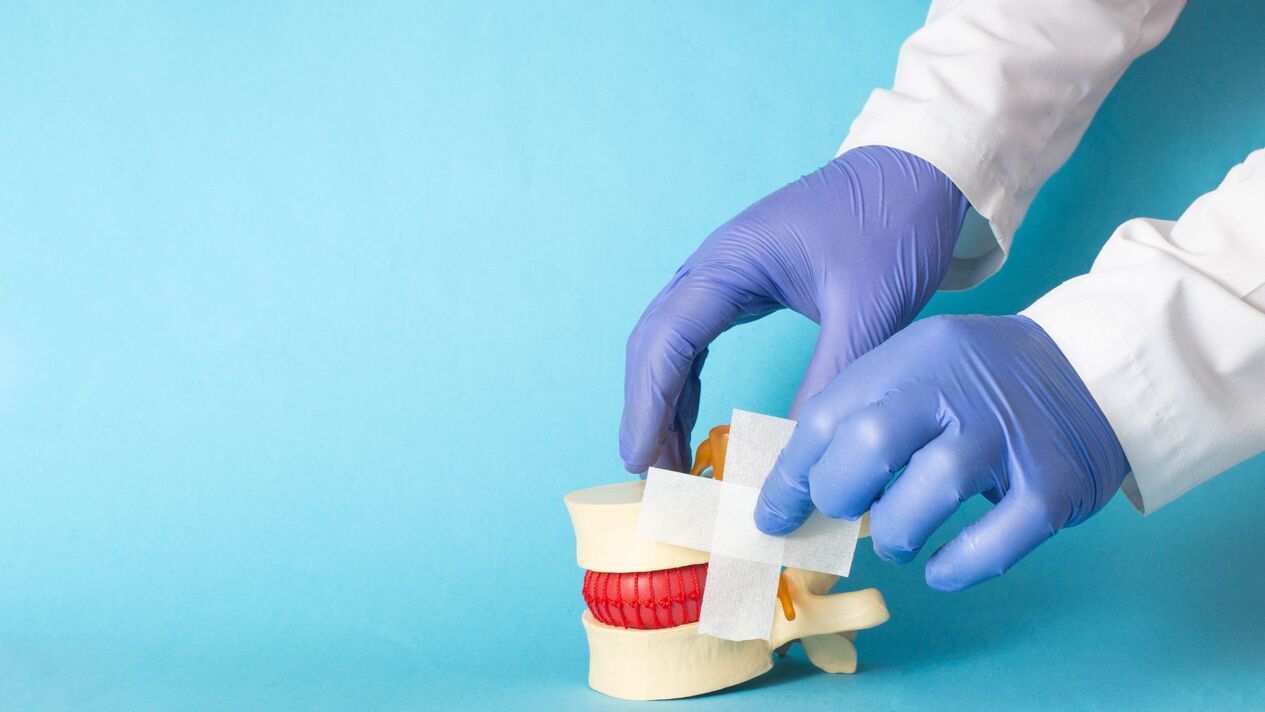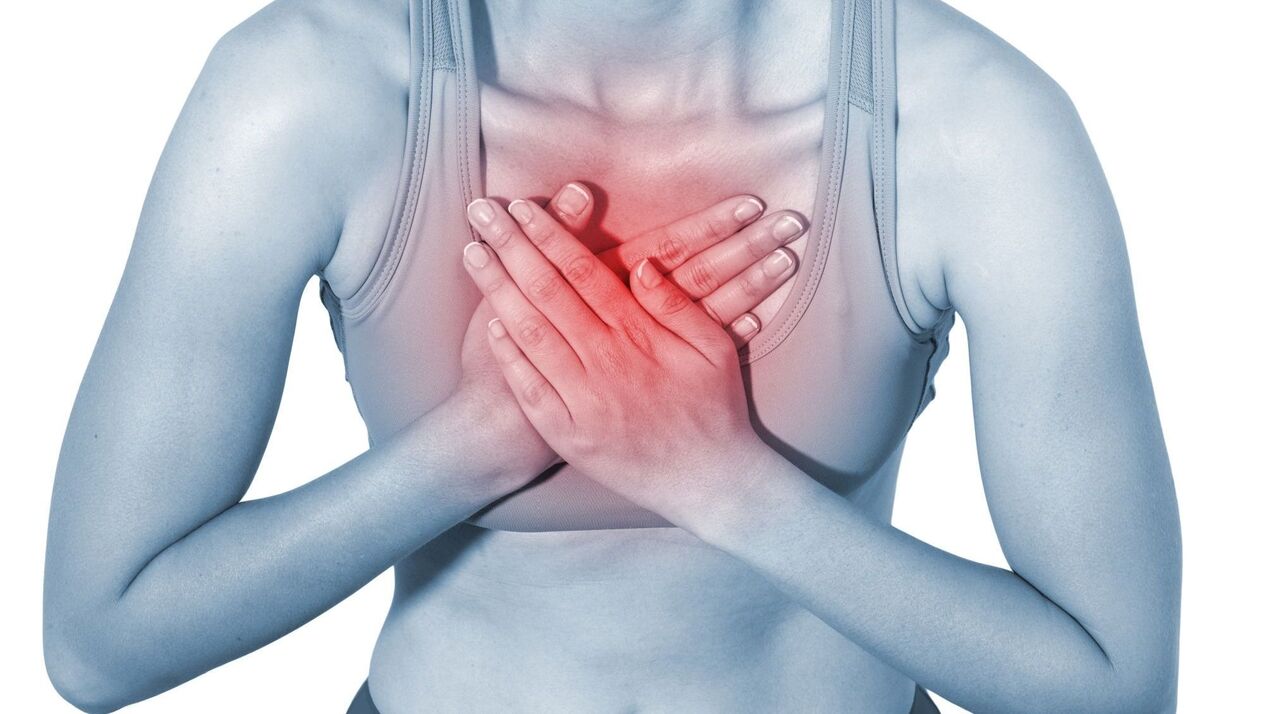Osteochondrosis is a long-term disease. When assessing the severity of pathological processes, four stages are most often distinguished:
- The first stage is the phase of initial changes in the fibrous ring of the intervertebral disc, which often go unnoticed by the patient;
- The second stage corresponds to the appearance of instability in the affected spinal segment, a decrease in the height of the intervertebral disc;
- The third stage is characterized by the appearance of hernias or osteochondral growths - osteophytes; the fibrous ring is almost destroyed at this stage;
- The fourth stage is characterized by irreversible damage to all structures that ensure intervertebral joint formation, intervertebral disc fibrosis and loss of mobility in the affected segment.

Causes of osteochondrosis of the thoracic region
It has been shown that our vertebrae slowly begin to deteriorate around the age of 20. As we age, the spine wears down. Due to degenerative processes, the thickness of the intervertebral disc, which acts as a shock absorber, decreases. In addition, abnormal structures appear on the bone edges of adjacent vertebrae: bone spurs, spondylophytes, which limit the range of motion.
Degenerative-dystrophic changes begin in the nucleus pulposus, then spread to the fibrous ring, as well as to other structural elements of the vertebra, causing the appearance of characteristic symptoms.
Due to the loss of water, the nucleus pulposus can no longer distribute the vertical load evenly. This has a negative effect on the fiber ring. Excessive compression (compression) leads to mechanical damage, the appearance of fractures and cracks. The joints are subjected to excessive stress, which gradually leads to spinal instability and pain.
Therefore, the main cause of osteochondrosis is natural aging. However, their development is also facilitated by a combination of many unfavorable factors that increase the likelihood of illness. These include:
- Smoke;
- Surgical procedures performed on the spine;
- Injuries to this part of the spine;
- curvature of the spine (scoliosis);
- weakness of the back muscles;
- obesity;
- Increased load on the spine.
It is assumed that the regression (aging) of the cartilage and bone tissue of the vertebrae is genetically determined and the progression to a disease state with characteristic symptoms and manifestations occurs under the influence of external and internal factors. Processes can start earlier if they are preceded by damage (mechanical, inflammatory, etc. ).
Symptoms of osteochondrosis of the thoracic region
Symptoms of osteochondrosis of the thoracic spine depend on the stage of the pathological process and the existing structural disorders. Unlike other areas of the spine (cervical spine, lumbar spine), root syndrome and other neurological complications are less typical in the thoracic region. This is explained by the presence of a bone frame in the rib cage, which limits the displacement and compression of this part of the spine. Pain in the chest area (dorsalgia or thoracic lumbago) is most often accompanied by immobilization of the intervertebral joints.
Reference! In neurology, thoracic lumbago or dorsago refers to acute, high-intensity pain that occurs in the thoracic spine and is often accompanied by breathing difficulties. The cause of the disease lies in severe cramping of the back muscles. It cannot be ignored because. . . Likewise, myocardial infarction can begin, and frequent lumbago can be associated with serious pathologies in the body.
The pain can last from several hours to several days. It is usually not as intense as damage to other parts of the spine, but it also involves movement of the spine. In addition, muscle hypertonicity is noted in this area, which may be accompanied by weakness and numbness in the hands.
The pain may be dull, burning, deep, paroxysmal or constant. It can be felt in the chest, heart area and other organs. Patients describe it as "a peg in the chest", "compression of the chest with a tire", "a blow with a knife between the shoulder blades". This section is characterized by radiating and belt-like pain, accompanied by deep sighs, coughs and suddenmovements of the chest.
Without treatment, osteochondrosis of the thoracic spine is often complicated by intercostal neuralgia. In this case, the burning pain may be localized in the area of the heart and may be confused by the patient with manifestations of cardiac pathology.

Important! If you feel pain in the heart area, you should not try to make a differential diagnosis on your own. To exclude heart disease and prevent the progression of pathological processes in the spine, it is important not to delay seeing a doctor, not to wait for pain and not to self-medicate.
Pain may increase with physical activity, bending over and psycho-emotional stress. If the outermost vertebrae of this area are affected, the pain can radiate to the lower back, sacrum, and even buttocks.
Diagnosis of osteochondrosis of the thoracic region
Diagnosis of osteochondrosis of the thoracic region is a multistage process. First, the doctor takes an anamnesis:
- Find out about your medical history;
- Did close relatives have a spinal disease?
- How long ago did the symptoms appear and how severe are they?
- What comorbidities are there?
A physical examination of the patient is required, including examination of the skin, assessment of postural abnormalities, and palpation (palpation) of the muscles near the spine. Neurological tests may be performed to make a diagnosis.
Instrumental diagnostics
Using diagnostic imaging, you can assess the degree of cartilage damage, detect other existing diseases and rule out diseases with similar symptoms. The recommended methods for instrumental diagnosis of osteochondrosis of the thoracic spine include:
- X-ray (spondylography) – provides information about the bone structure, the presence of osteophytes, the condition of the facet joints;
- With CT (computed tomography) you can examine everything in detail and take measurements if necessary. It has advantages over MRI in diagnosing pathologies of bone structures.
- MRI (magnetic resonance imaging) allows you to assess the condition of soft tissues, diagnose inflammatory processes, tumors and spinal hernias, detect pathological changes in cartilage, bones, ligaments and blood vessels, and detect narrowing of the spinal canal. MRI is used to detect vascular pathologies and tissue circulatory disorders in the thoracic spine.
Drug blocks can also be used for diagnostic purposes. Due to the variety of pain manifestations, there is often a need to conduct additional examinations to exclude:
- angina pectoris;
- Heart attack;
- aortic aneurysms,
- cholecystitis,
- stomach ulcer;
- Lung infection;
- Oncological diseases, etc.
Treatment methods for thoracic osteochondrosis

Osteochondrosis of the thoracic spine is a disease that requires complex treatment. In addition to drug treatment to relieve pain, it is important to contact specialists in the field of traumatology and neurology to find out the exact causes of the disturbing symptoms.
Treatment tactics depend on the severity of the disease. Typically, the first treatment option is conservative therapy such as physical therapy, nonsteroidal anti-inflammatory drugs, heat therapy, and nerve block injections.
Exercise therapy for osteochondrosis of the thoracic region allows you to strengthen the muscles of the back and interscapular region, form a muscle corset and correct posture, provide muscle relaxation and improve blood circulation in this section of the spine. With osteochondrosis in this area, breathing exercises, bringing the shoulder blades together and rotating the shoulders are useful.
Massage helps to normalize blood supply and lymphatic drainage and activate metabolic processes. It is prescribed outside of an exacerbation when the patient is not suffering from severe pain. Different types of medical massage are used: manual (hand), underwater, vacuum.
Manual therapy methods are also popular. Chiropractors work with blockages and clamps in the musculoskeletal system and release them using various techniques. Acupressure or acupressure can also be performed for acute pain. The doctor exerts a therapeutic effect on the entire body by applying varying degrees of pressure with his fingers on certain points.
Physiotherapy techniques are very effective in the treatment of osteochondrosis of the thoracic spine. They help relieve pain, improve blood circulation and strengthen spinal muscles. Among them:
- ultrasound therapy;
- electrophoresis of drugs;
- Laser therapy in the spine area;
- Transcutaneous electrical neuromyostimulation;
- exposure to magnetic fields;
- Electro-impulse therapy.
To enhance the therapeutic effect, a combination of drug and non-drug therapy methods is recommended. Treatment of osteochondrosis of the thoracic spine can take a lot of time, but the results are visible after the first procedures. The main thing is not to delay seeing a doctor and start treatment at the early stages of the disease.
If conservative treatment does not help, surgery may be necessary. Decompression and stabilization operations are most commonly performed. They allow you to stop the compression of the spinal cord, nerve roots caused by hernias, osteophytes or hypertrophied ligaments and fix the affected segment.
After surgical treatment, you will have to wear a special corset for some time. After discharge from the hospital, medical rehabilitation is prescribed.
Treatment of thoracic osteochondrosis at home
Treatment of osteochondrosis of the thoracic spine at home can be effective under several conditions. First, the diagnosis must be made after a complete examination by a specialist. Treatment methods should also be discussed with a doctor to ensure that there are no contraindications in the presence of concomitant pathologies.
The most important and basic thing is to maintain a healthy lifestyle, control body weight and get enough physical activity. The best way to combat back pain is exercise. They help to strengthen the back muscles, improve blood circulation, manage stress better and thus prevent the progression of the disease.
If the condition worsens or severe, stabbing pain occurs, it is better to lie down and ensure that the spine remains still. Heat treatments and massages help to cope with unpleasant sensations. In any case, home treatment does not replace consultation with a specialist and the implementation of his recommendations. Uncontrolled self-medication can lead to a worsening of the condition and the development of complications.
Which doctor should I contact?
Neurologists and orthopedists treat osteochondrosis of the thoracic spine. They carry out diagnostics, make a diagnosis and select the appropriate treatment. Patients may also need to consult a physical therapist and an exercise therapy doctor.
If you have chest pain, you can also see a therapist. He analyzes the clinical symptoms, prescribes the necessary examinations and refers you to a specialist.
Treatment of thoracic osteochondrosis
Doctors at your regional clinic will help you cope with the symptoms of osteochondrosis of the thoracic spine. Almost every clinic has the necessary modern diagnostic equipment, which allows you to obtain the most accurate information about the condition of the spine and choose the most effective method of treatment. Experienced specialists of different profiles help patients restore their health in comfortable conditions: neurologists, orthopedists, physiotherapists, masseurs, therapists.
If necessary, in modern reality it is possible to get advice from other specialized specialists in the shortest possible time and without queues. If you have any questions, the advisors will be happy to help you. Fill out the feedback form online and you will definitely be called back.


























